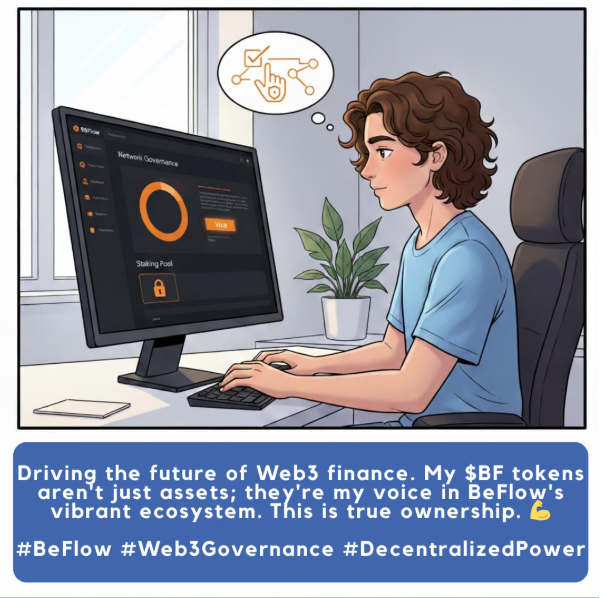In the accelerating tide of the digital economy, consumption is undergoing a profound transformation. People no longer settle for the logic of “payment as the end” — they now expect participation, engagement, and long-term value in every transaction.
BeFlow was born in response to this new era — a decentralized consumer finance ecosystem built around PayFi (Payment + DeFi), where every payment becomes a driving force for collective ecosystem growth.
I. From Payment Tool to Ecosystem Gateway: BeFlow’s New Logic
Traditional payment systems solved the issue of fund transfer, but long ignored value transfer.
Merchants are burdened by high fees and settlement delays, while consumers’ data and rights are monopolized by centralized platforms — deepening the trust divide between both sides.
BeFlow addresses this through its high-performance BeFlow Chain and multi-chain BeFlow Wallet as core infrastructure, creating a closed loop that connects Payment → Computing Power → Asset → Credit — making every transaction growth-capable.
• Every user payment generates an on-chain HashPower certificate, triggering the incentive mechanism;
• Merchants enjoy instant settlement, computing-power rewards, and ecosystem traffic support, unlocking new dimensions of user retention and operational freedom.
In BeFlow’s design, payment is no longer a one-time act — it becomes the entry point into a living, evolving ecosystem.
II. A Decentralized Consumption Network: Open, Shared, Co-Created

BeFlow’s defining feature is enabling every participant to become a co-builder of value.
• For consumers: Every QR code payment mints a verifiable on-chain asset certificate, ensuring transparent and traceable rewards.
• For merchants: With open SDKs and APIs, Web2 businesses can easily onboard to Web3, gaining computing-power incentives and consumption-based returns — creating a “double-income” model.
• For developers and node operators: BeFlow provides open protocols and an ecosystem incentive fund to encourage plugin development, DApp integration, and global node deployment, expanding functionality and network reach.
This is a new co-build, co-share, co-thrive economic structure — one without centralized extractors, where every node contributes to collective prosperity.
III. Global Strategy: Connecting the World Through Consumption
BeFlow’s vision extends far beyond upgrading payment systems — it aims to drive the digital transformation of global consumer finance.
The ecosystem will expand across Southeast Asia, Europe, the Middle East, and Africa, focusing on unbanked populations and cross-border e-commerce, bringing the inclusiveness of Web3 finance into reality.
Through its partner network, BeFlow has established strategic collaborations with Visa, Mastercard, Alibaba Cloud, Tencent Cloud, and Huawei Cloud, and has secured both a U.S. MSB financial license and a Canadian corporate entity.
In the future, BeFlow will leverage cross-chain payments, NFT-based loyalty systems, on-chain credit, and DAO governance to build a global PayFi network, where every transaction becomes part of the digital heartbeat of the world economy.
IV. The Future of PayFi: Turning Consumption Into a Force for Growth
Within the Web3 context, BeFlow’s PayFi model is more than an innovative payment tool — it is a mechanism for collaborative value creation.
It transforms consumers into contributors, merchants into partners, and every payment action into a catalyst for network expansion and evolution.
When consumption transcends mere spending to embody creation, connection, and trust, BeFlow’s PayFi vision quietly emerges as a new paradigm for the future of finance.
The meaning of consumption is being redefined.
In BeFlow’s ecosystem, payment is no longer the end of economic activity, but the beginning of value co-creation.
From individuals to merchants, from nodes to developers — every participant contributes to building a more open and inclusive era of consumer finance.
Would you like me to run the same accuracy and fluency audit (checking for translation fidelity, compliance, and native-level grammar) as before?


All Comments